3 Golf Training Program Exercises You Can Do All Year Round
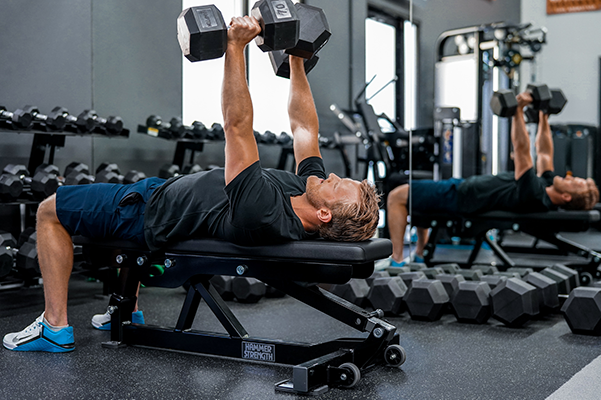
I used to live in Florida and as long as it wasn’t raining, it's a golf day. Of course, we realize that everyone isn't this lucky. In many parts of the country, the golf season may be as short as six or seven months. We get asked all the time about how someone's workout should change from the fall to the winter to the spring and into summer. It's a great question because there are definitely things that you want to be doing in the off-season or pre-season
that you might not want to be doing once you're out playing 18 on a regular basis.
We've broken down the calendar into the off-season, pre-season, and in-season to let you know what our training plan is for each period. And to take things from "theory" to "application" and to let you get a sweat going, we've included three season-specific variations on the same exercise. Feel free to add these into your golf training program to help you keep optimizing your body for the game, whether there's three feet of snow on your lawn or it's sunny and 80 and you've got an afternoon tee time.
OFF-SEASON
If you live in the northern two-thirds of the country, your off-season is December through February. For the pros dealing with the PGA Tour's almost non-stop schedule, it's a lot shorter. This is the time when we want to lay down the foundation of strength and endurance
that we're going to build on for the rest of the year. We may have players go a little heavier with weights and do some more intense conditioning work, but we can get away with it because our Tour players aren't hitting thousands of balls a day and playing multiple rounds per week.
Dumbbell Chest Press
A great way to build the muscles of the chest, shoulders, and triceps. This big pushing movement will help you develop explosive strength and power and the added triceps work will help you stabilize the elbow during the swing to improve accuracy.
Lie on a bench with a reasonably heavy dumbbell in each hand. Weights should be at your armpits with elbows pointing toward the floor. This is the starting position.
Moving both arms at the same time, punch the weights towards the ceiling. At the top of the movement, with your arms fully extended, the dumbbells should be close to each other without touching. Stabilize the weights in this "up" position and then carefully reverse the movement to return to the starting position. Shoot for three sets of 10-12 reps.
PRE-SEASON
Pre-season is when we transition into more golf-specific movements. It's when we think about how all of our off-season exercises translate into more power, accuracy, and consistency out on the golf course. In the pre-season, which for a lot of the country is March and April, the weather may not be good enough for you to play a full 18, but there are some days when you can escape for some practice time to hit a bucket of balls. This gives us some nice feedback on how our progress is going. In the gym, we might lower the weight in order to focus on things like balance, stability, and golf-specific coordination. We'll also add in a few more moving parts to each exercise to increase your sense of body awareness.
Alternating Dumbbell Press on Stability Ball
A similar move to the off-season chest press but with more golf-specific focus. The instability caused by lying on a ball instead of a solid bench will force your legs, hips, and core to become involved in stabilizing you. Moving in an explosive way with alternating arms will also engage the spinal rotators that are so vital for creating power in the golf swing.
Lie back on a stability ball with a medium-weight dumbbell in each hand. Your head and shoulders should be supported in a neutral position on the ball -- your head shouldn't be hanging off the end of the ball, nor should your chin be jammed into your chest. This is the starting position.
Explosively punch your right arm toward the ceiling. Move with such force that your right shoulder comes off the ball slightly. As you're lowering your right arm back to the starting position, punch your left arm up to the ceiling. This time, let the force of the movement lift your left shoulder off the ball. Continue alternating until you've done 15 presses on each side. Despite the fact that this is an upper body exercise, you WILL feel it in your legs, glutes, and core. Do three sets of 30 alternating presses.
IN-SEASON
Once you're into your playing season, the goal of the workouts is maintenance and injury-prevention. Movements are still similar to those we do in the off-season or pre-season but are done with less resistance. But don't let the lighter weights fool you; the added focus on balance, stability, and body awareness will keep you just as physically and mentally engaged. It's also a good time to work out any issues that show up when you've been playing on a regular basis. You may find that your body needs some extra stretching on days after you play or that you seem to play best after a light workout with resistance bands.
Single Leg Standing Press
To keep the chest, shoulders, and triceps busy during in-season workouts, but without hitting them so hard that they might affect your ability to swing the golf club the next day, we shift the emphasis to balance and body control.
Attach a V-shaped resistance band -- or the ends of two single resistance bands -- to an anchor point set at chest height. Stand facing away from the anchor point with a handle in each hand at chest level. Raise your left leg so that your left thigh is parallel to the ground. This is the starting position.
Keeping your upper body tall and quiet, press both arms straight out in front of you. You'll feel this in the chest, shoulders, and arms, but you'll probably feel it just as much in your legs and core. That's a good thing. Hold the arms out in this extended position for a two-count and then return to the starting position to complete the rep. Go slow. This is about how well you can move in an unstable position; it's not about how fast you can flail. Do three sets of ten reps standing on both the right and left legs.

Hey everyone, Daniel Guest here—Top 100 Coach, #1 Instructor in PA, and founder of Imagen Golf. I've given over 39,000 lessons, and if there's one thing I know, it's that the game is always evolving. We're not just practicing anymore; we're training smarter than ever. The days of just grinding on the range are over. The future of golf instruction is personalized, tech-driven, and focused on your unique blueprint. Let's dive into the three biggest game-changers you need to leverage right now to Unleash the Golfer Within!

NEWTOWN, Pa. - Oct. 12, 2025 -- Newtown and surrounding communities are about to experience golf like never before. The Golf Place, a state-of-the-art indoor golf facility designed for enthusiasts of all skill levels, from those honing their game to those simply seeking a fun, engaging golf experience, today announced its grand opening for Tuesday, October 25, 2025. The Golf Place is poised to become the region's premiere destination for indoor golf instruction, practice, and play. The facility will feature eight cutting-edge Trackman golf simulators, offering hyper-realistic gameplay, detailed swing analysis, and access to the world's most famous courses.

Moving decisively away from subjective "feel-based" advice to a scientific, data-driven approach.Fueled by advancements in technology, the latest trends are democratizing the precise analysis once reserved only for tour professionals, making personalized, high-level coaching accessible to every golfer. Here's a look at the key trends shaping modern golf instruction and practice in 2025:

For years, you've been told to do a bunch of confusing things—like opening the clubface wide open and swiping across the ball—that just don’t work for the average golfer. It’s an old-school approach designed for old-school wedges. But at Imagen Golf, we don’t teach that. We teach the new-school bunker technique that the best players in the world are using every week to make bunker shots look easy. Players like Scottie Scheffler, Jon Rahm, and Collin Morikawa have all ditched the old rules for a simpler, more powerful way to get the ball up and down.
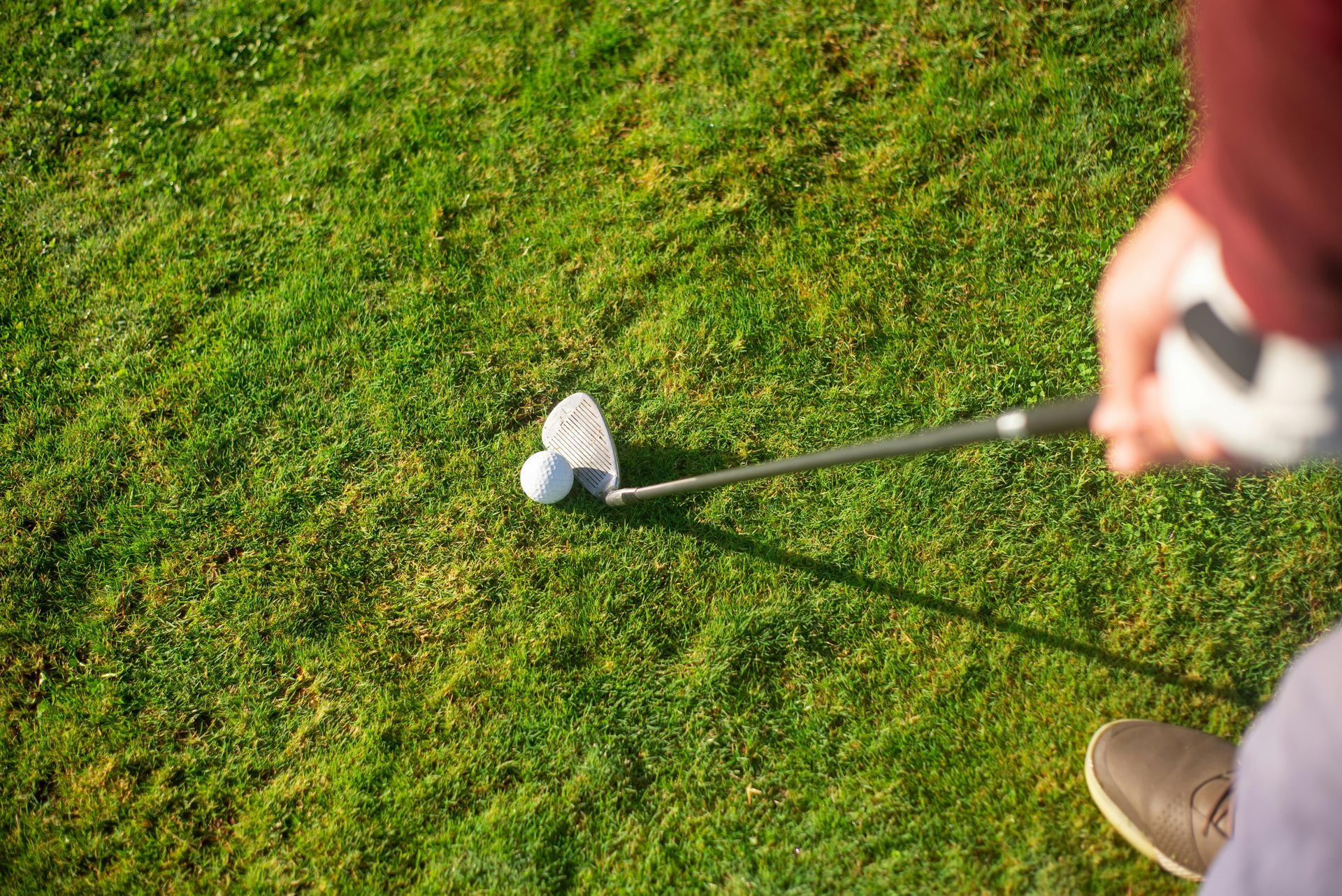
When we hear the word stinger in golf, the first thought that often comes to mind is Tiger Woods and his famous 2 iron stinger he rips down the fairway.This golf shot is super important to have in your skill arsenal. If you don’t carry a 2- or 3-iron, a fairway wood will achieve similar results. The concept behind the shot can also be used for punch approach shots to receptive greens, using any club down to a pitching wedge.On windy days, you can use it to maximize distance by hitting that low flying drive that stays low and runs like crazy upon landing. Meanwhile, your playing partners are watching their drives get hung up in the wind, losing 50 yards off their normal distances. So what's the secret? How do we perfect the stinger like Tiger? To hit the “stinger” you want to produce a low dynamic loft when you strike the golf ball in order to create a low launch and low spin. By default, you're used to hitting with high dynamic loft so it can make the transition a challenge at first but once you master it, you can hit this golf shot on command any time you need. How to Hit with Low Dynamic Loft To produce low dynamic loft, we want to create forward shaft lean at impact which basically means the grip of your club is ahead of the clubface when striking the golf ball. This delofts the face which helps lower the launch angle and back spin rate. In order to create a forward shaft lean at impact you'll need to change a few things during set up. 1. Start by moving the golf ball a little further back in your stance and place a little more weight on your lead side (left side for right handers). This simple adjustment in set up will set your hands forward at address and will help you produce a slight downward hit on the ball. 2. Choke down about an inch on the grip for added control. These adjustments should cause your arms and the shaft to form a “y”. Make a smooth, full backswing, and try to retain this “y” as much as possible throughout the swing. 3. Now the key to creating a low loft and square face at impact is in the lead wrist. The stinger’s low trajectory and extra roll result from the bowed wrist position at impact. To practice getting the bowed wrist feeling, simply make a swing with your lead arm, without a club. Return the hand to impact with your lead wrist “bowed” so that the logo on the glove points to the ground directly in front of the ball. This is a great “feeling” in the golf swing to help lean the shaft forward and square the face up when striking the golf ball 4. Lastly, make sure you maintain this low loft through impact and during the follow through. The mental swing thought is to hit the ball and stop. This prevents the wrists from flipping over or “releasing” after impact. Once you achieve the bowed impact, the finish flows naturally, as the trunk and arms rotate the club around to the left. Instead of causing a slice, this allows for a low, running draw. The faster the body unwinds, the farther you can hit the ball. The finish should feel very different from a normal swing where the hands turn over. To “sting” it, the wrists stay firm, and the left elbow folds down toward the ground.
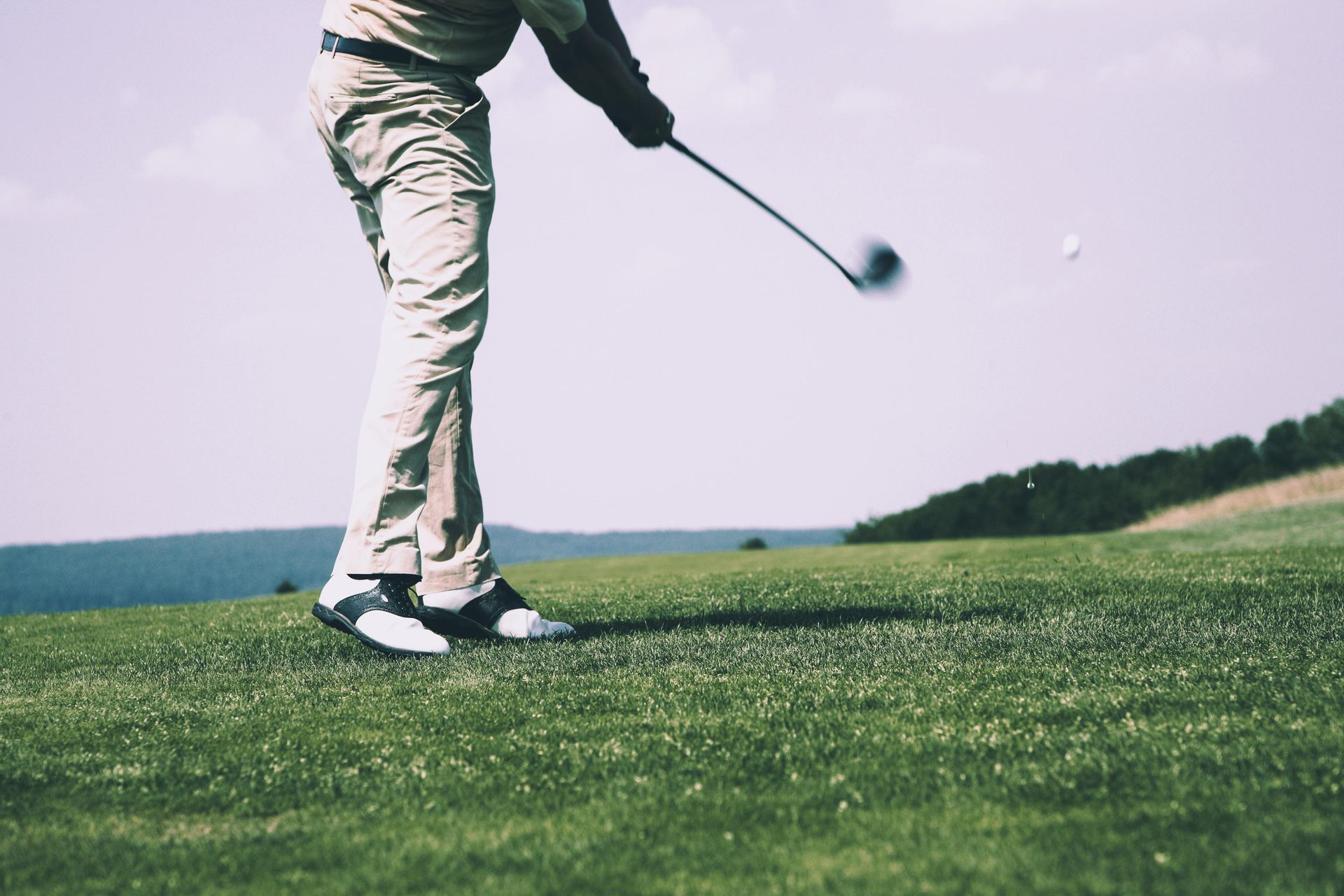
#1: Choke Down the Club The first step to getting back in control when you feel like you're losing your swing mid-round is to choke down on your clubs more than normal. Shortening the stick will help you control the face more, similar to how you can hit your wedges straighter than the driver because they're a shorter club length. #2: Swing at 60% Normal Power During our golf rounds, we often start changing our tempo and speeding up our swing without realizing it. This mental tip will help you slow down a little bit by getting you to feel like you're swinging 60% of normal, but in reality, you're probably swinging 80-90% still. As we slow down our tempo and get back to a more natural rhythm, you'll see control come back into your golf swing. A good way to do this, it to take 3 swings. The first one swing as hard as you can. The second, swing very soft. Then on your third, try to swing in the middle of the previous two swing speeds.Subscribe #3: Hold the follow-through finish until you see the ball land. In basketball and in golf, the follow-through is important to keeping the shot on line. Try making your swing thought about holding the follow-through prior to swinging and it will take your mind off of what all could go wrong during the swing. It also will tell your subconscious mind to recall what the follow-through feels like. It's often the backswing or the downswing we are focused on feeling in our pre-shot routine and during our golf swing, but let's put our mind onto the follow through and focus on holding it like a statue upon finishing. Learn more about our advanced golf training to speed up your improvement!
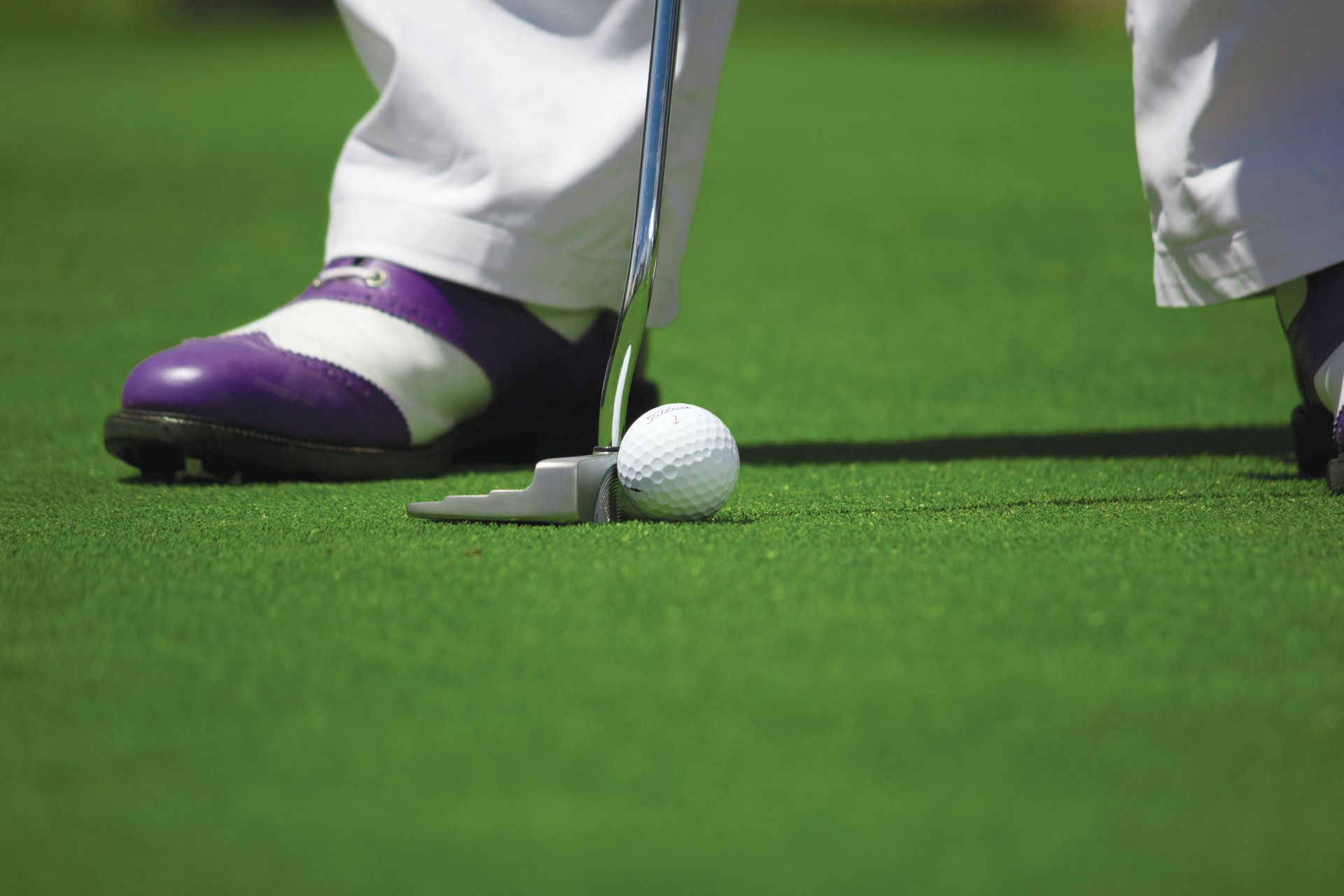
Proper footwork, weight distribution, and weight movement are fundamentals that many players can improve if they understand and practice properly while working on their golf game indoors. Good footwork puts you in the best position to deliver the club consistently. That’s where a good friend of mine and Golf Digest Top 50 Instructor Todd Sones is teaching these days: indoors. In the winter months, Todd works out of the Buffalo Grove Dome located 45 minutes northwest of Chicago. Todd is on the Golf Academy of America’s National Advisory Board and says when you’re practicing inside, you should always wear your golf spikes. So often, Todd sees people come in to practice off the mats wearing their tennis shoes. While it’s convenient, the problem is that your tennis shoes are designed for heel-toe motion, a linear motion. Golf is a rotational motion. It’s important that you’re on your feet properly. The best players move in a circular motion. Their weight is more toward the balls of their feet at address, their knees are slightly flexed, and their lower body is engaged. As the body rotates, a good player loads the heel of the trail leg and then on the transition to the downswing, drives into the instep of the lead leg before rotating back into the heel of the lead leg. Although you start on the balls of your feet in the set-up position, you really swing from the heels throughout the backswing and the downswing into impact. When you’re wearing tennis shoes that push your weight more toward your toes, you can’t swing the club nearly as forcefully as you can if you’re swinging with proper weight distribution. When someone wears their tennis shoes, you’ll see their head move forward into their toes, and then they back up away from the golf ball during the swing.
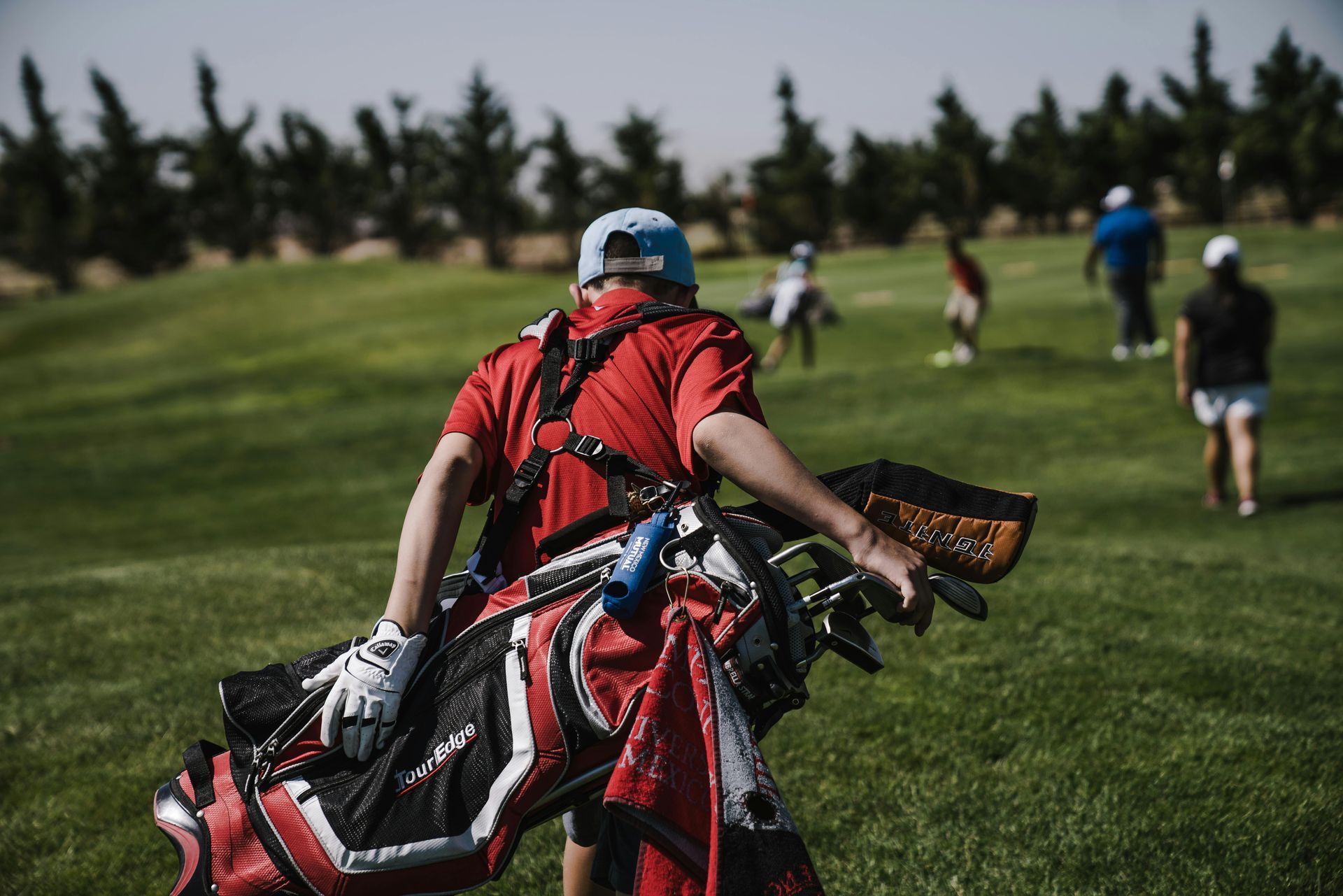
The hard truth is that the average golfer plays for years and never improves. But why? With input from many of my instructor friends, we’ve drawn up a list of the 12 reasons why you may not be getting better. 1. You never practice You know that whole 10 thousand hours thing? How it takes at least that long to master a skill? Do the math. Ten minutes once a month isn’t going to get you there. 2. You practice unproductively Smacking drivers on the range until you’re blue in the face might give you a backache. But it’s not going to get you where you want to go. What you need to do is practice with a purpose. Go to the range to get better at one thing, posture for example. Once you’ve spent 30 minutes working on that and incorporating into your swing, leave the range. 3. Your equipment isn’t optimized That includes your golf ball, we recommends getting your entire arsenal checked at least once a year. 4. You’ve got the wrong mix of clubs News flash. You’ve got no business carrying a two-iron. You’re also probably not good enough to have more wedges than hybrids in your bag. So don’t. 5. You don’t track your stats You think you’re a great putter, and a middling driver. But are you really? Without knowing for sure, you can’t maximize your practice time, much less devise an optimal on-course strategy. 6. You’re not as good as you think you are Two-twenty over water is not in your wheelhouse, but you always try it, because, well, your weakness is your fondness for the hero shot. 7. You’re too hard on yourself On approach shots from 150 yards, the average Tour pro leave is 23 feet from the pin. But you somehow believe you should be knocking down the flagstick, so you berate yourself every time you don’t. 8. You ride a cart You think you’re saving energy. What you’re really doing is losing touch with the natural rhythms of the game. Walk when you can. 9. You think there’s a quick-fix In a world filled with swing tips, you believe there’s a magic one that will solve all your problems. So you search, and search. You might as well be trying to track down Sasquatch. The tough news is it comes down to working on good principles long enough for them to become habits. 10. You’re don’t hit it far enough Sorry, but size matters. A good way to get better is to swing the club the faster to hit the ball longer. Any good coach can correct crooked, but getting the ball to go farther is a tougher task. 11. You focus more on words than feel You’ve gotten a lot of verbal instruction. But, words don’t translate as well to performance. Pay more attention to images and feels. It will free up your mind. And your swing. 12. Play the appropriate tee box I know, all your buddies play from the blues, but you’re a 20+ handicap. Not only do you have NO business playing from the far tee boxes but it hurts your game as the course sets up completely different for you now. Put your ego aside and have fun!


